Are you looking to learn how to use a tattoo gun for beginners? This comprehensive guide will provide you with all the information you need to get started and create beautiful tattoos. We’ll cover the basics of tattooing, such as the types of tattoo guns available, safety precautions, and the different techniques to use when creating a tattoo. By the end of this guide, you’ll have the knowledge and confidence to start your tattooing journey.
Contents
What is a Tattoo Gun?
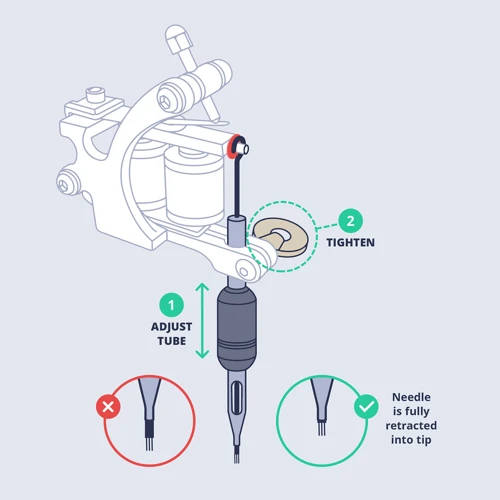
A Tattoo Gun, also known as a tattoo machine, is the main tool used in the art of tattooing. This machine is used to embed ink into the skin of a person, creating a permanent tattoo. It is composed of a needle, which is attached to a hand-held machine. The needle is moved up and down rapidly, piercing the skin and injecting the ink. It works by connecting the needles to a power source, such as a foot pedal, and activating the device.
When looking to set up a Tattoo Gun for beginners, it is important to understand the components of the machine and how they fit together. The main components of a Tattoo Gun are the power source, the armature bar, the tube, the needles, and the ink. The power source is typically a foot pedal, which is connected to the armature bar. This bar is then connected to the tube, which contains the needles. The needles are then used to inject the ink into the person’s skin. It is important to ensure that all of the components are connected properly and that the needles are sterilized before use.
How to set up a Tattoo Machine for Beginners
Once all of the components of the Tattoo Gun are assembled and sterilized, the machine is ready to use. Beginners should start by practicing on a practice skin, as this will help them to get used to the way the machine works and how it feels. After some practice, they can move on to using the machine on actual skin. When using a Tattoo Gun for the first time, it is important to be sure to use the correct needles and to control the speed and pressure applied to the skin. It is also important to make sure to keep the area clean and to use the correct aftercare products.
When done correctly, a Tattoo Gun can provide stunning results and can be a great way to express one’s creativity. With the right knowledge and practice, anyone can master the art of tattooing.
What Do You Need to Get Started?
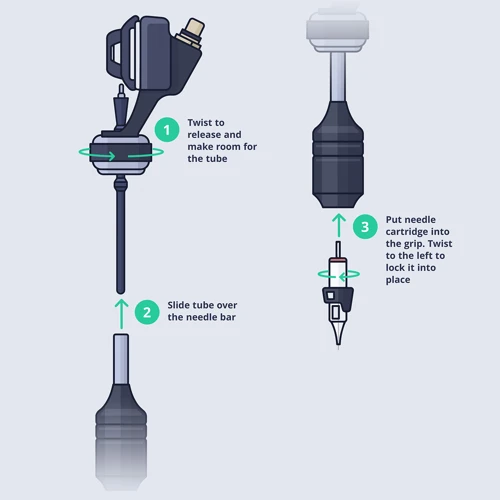
- Tattoo Machine – A tattoo machine is the most essential tool for anyone who wants to get into the art of tattooing. It is used to inject ink into the skin, and it comes in many different shapes and sizes.
- Ink – Tattoo ink is essential for any tattoo artist, and it is available in a wide range of colors and sizes. Make sure to research the best quality ink before you buy it.
- Needles – Needles are used to inject the ink into the skin and come in a variety of sizes. The size of the needle you need will depend on the type of tattoo you are doing.
- Power Supply – The power supply is an important part of the tattoo machine and allows it to function properly. Make sure to get the right power supply for the type of machine you are using.
- Grip – The grip is the part of the tattoo machine that is held in the hand while tattooing. There are many different types of grips available, so make sure to choose one that is comfortable for you.
- Flash/Designs – If you are creating a custom tattoo, you will need some flash/designs to choose from. There are many online sources that offer a wide selection of designs to choose from.
- Gloves – It is important to wear gloves when tattooing to protect yourself and the client from infection. Make sure to use disposable gloves that are specifically designed for tattooing.
- Disposable Supplies – Disposable supplies such as paper towels, cups, razors, and more are essential to any tattooing session. Make sure to stock up on these supplies before starting a new tattoo.
How to Assemble a Tattoo Gun
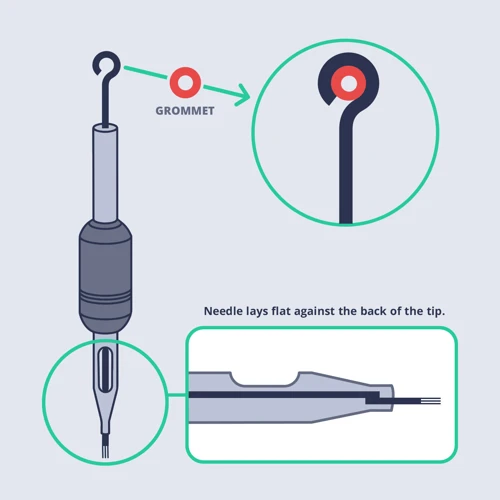
Check the Instructions
Before beginning, it is important to take the time to read the instruction manual for your tattoo gun. The manual will explain how to properly assemble the gun, as well as how to use it safely. Ensure that all of the parts that come with the gun are accounted for and in working condition prior to starting the assembly process.
Assembling the Tattoo Gun
Attach the Clip Cord – The clip cord is a wire that connects the needle to the power supply. Begin by attaching one end of the clip cord to the needle, usually by screwing it in. Then attach the other end to the power supply.
Attach the Needle – The needle should be securely attached to the armature bar. Tighten the screws on the armature bar, to ensure that the needle is secure.
Attach the Tube – The tube is a piece of flexible plastic that connects the needle to the ink tube. Slide the tube over the needle and then attach it to the ink tube.
Attach the Power Supply – The power supply is what powers the gun. The power supply should be connected to the armature bar and the clip cord.
Attach the Foot Pedal – The foot pedal is what you will use to control the power supply. Attach the foot pedal to the power supply and ensure that it is securely in place.
Test the Tattoo Gun – Before using the gun on yourself or another person, it is important to test it. Turn on the power supply and press the foot pedal. The gun should start vibrating and the needle should move up and down. If everything is working correctly, then you are ready to start using the gun.
How to Set Up a Tattoo Machine
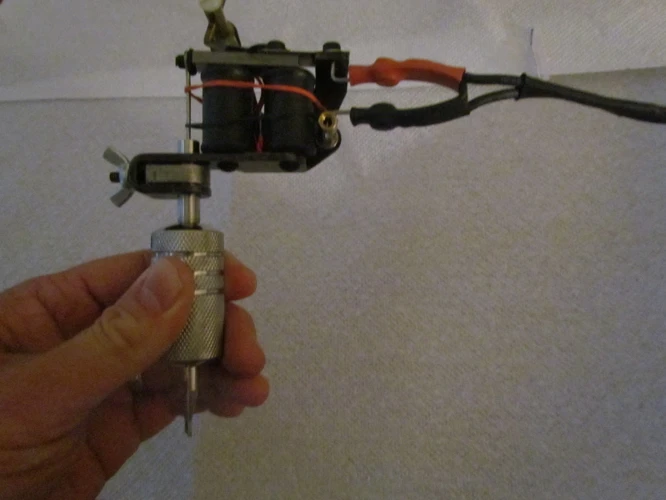
Preparing the Work Area
Before setting up the tattoo machine, it is important to prepare the work area. This includes ensuring the area is clean by wiping down surfaces and sterilizing tools. It is also important to lay out all the needed tools and supplies to make sure nothing is missed.
Setting Up the Tattoo Machine
The tattoo machine consists of a few key parts that must be assembled before use. First, attach the needles to the tube, then attach the tube to the machine. Ensure the needles are securely attached and that the machine is connected to the power source.
Adjusting the Voltage
Once the machine is set up, the voltage must be adjusted. This is done by turning the voltage dial until the desired output is achieved. To ensure a successful tattoo, it is important to adjust the voltage correctly. The voltage must be adjusted according to the desired line width, depth, and flow of the tattoo.
Hygiene and Cleanliness
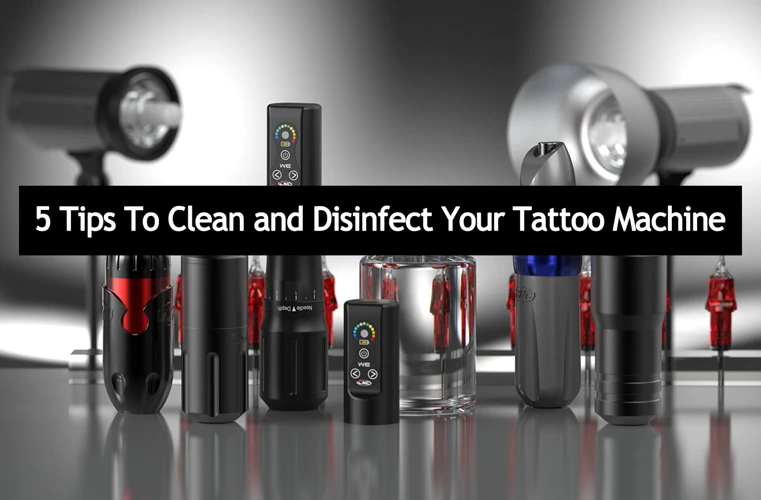
Cleanliness is of utmost importance when using a tattoo gun, as this will protect both you and the customer from any potential infections. Ensure that you have a sterile environment and that all equipment is clean and sterile. You should also wear gloves and a mask when using a tattoo gun.
Clean the area of the skin that you are about to tattoo. This can be done by using a disinfectant such as rubbing alcohol. Make sure to use a clean cloth when wiping the area, as this will help to prevent any infection.
Change needles frequently when using a tattoo gun. This will help to ensure that the needles are free of any bacteria or germs. You should also make sure to use a new needle for each customer.
Use a barrier between the skin and the needle when using a tattoo gun. This can be done by using a barrier cream or ointment. This will help to protect the skin from infection and will also help to ensure that the needle does not damage the skin.
Cover the equipment when it is not in use. This will help to prevent dust or other particles from getting into the needle. This will also help to ensure that the equipment remains clean and sterile.
Wash your hands before and after using a tattoo gun. This will help to reduce the risk of any contamination.
| Cleanliness Area | Action |
|---|---|
| Sterile environment | Ensure all equipment is clean and sterile |
| Area of skin | Use a disinfectant such as rubbing alcohol |
| Needles | Change needles frequently |
| Barrier between skin and needle | Use a barrier cream or ointment |
| Equipment | Cover when not in use |
| Hands | Wash before and after using a tattoo gun |
Tattoo Aftercare
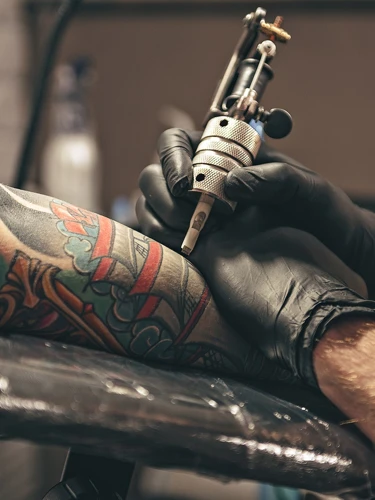
Taking proper care of your new tattoo is essential for it to heal properly. Proper tattoo aftercare is the key to a successful and beautiful tattoo. Here are some tips to remember:
- Keep it clean: Wash your tattoo with warm water and a mild, unscented soap twice a day for the first few days. Make sure to rinse it thoroughly and pat it dry carefully with a clean towel.
- Apply a thin layer of ointment: After each wash, apply a thin layer of a fragrance-free, water-based ointment or cream. This will help the tattoo heal properly and prevent it from drying out.
- Avoid the sun: Keeping your tattoo covered and out of direct sunlight will help it heal more quickly and prevent it from fading.
- Minimize contact with clothing: Wear loose-fitting clothing over your tattoo and avoid tight clothing that can rub against it and cause irritation.
- Be patient: Healing takes time, so be patient and keep an eye on your tattoo for any signs of infection or irritation.
Following these tips will help ensure that your new tattoo heals properly and looks beautiful for years to come.
Troubleshooting Tips
1. Check the Power Supply
- Ensure that the power supply is in proper working condition.
- Check the voltage and amperage of the power supply.
- Make sure that the power supply is properly connected to the tattoo machine.
2. Adjust the Needle Depth
- Tattoo needles should be set to the correct depth before you start tattooing.
- If the needle is too deep, it can cause skin damage and scarring.
- If the needle is too shallow, it can cause the tattoo to be too light or not visible.
3. Check the Contact Screws
- The contact screws should be adjusted so that the machine runs smoothly.
- If the contact screws are too tight, the machine will not run smoothly.
- If the contact screws are too loose, the machine will not run correctly.
4. Check the Tube Bands
- Check the tightness of the tube bands to ensure that they are secure.
- If the tube bands are too tight, it can cause the needle to move inconsistently.
- If the tube bands are too loose, it can cause the gun to overheat.
5. Clean the Machine
- Clean the machine regularly to ensure that it is free from dirt and bacteria.
- Wipe the machine with a clean cloth to remove any excess ink or debris.
- Use a disinfectant to clean the machine after each use.
Frequently Asked Questions
What type of equipment is necessary to use a tattoo gun?
Tattoo gun – This is the main device for tattooing which includes the needle, power supply, and foot pedal.
Needles – The needles that come with the gun should be sterilized and inspected before use.
Power Supply – This is the device that connects the gun to the electrical outlet and regulates the flow of power to the gun.
Inks – Inks come in a variety of colors and must be sterilized before use.
Transfer Paper – This is used to transfer the design onto the skin before tattooing.
Safety Equipment – Gloves, face masks, and other protective gear should be worn when tattooing.
Clippers – Clippers are used to trim the area of skin that will be tattooed.
Antiseptic – Antiseptic is used to clean the area before and after tattooing.
Is it Safe to Practice on Fake Skin Before Tattooing a Person?
Practicing on fake skin is an important step for any beginner tattoo artist. It can help you get comfortable with the tools and techniques before tattooing a real person. Fake skin is completely safe to use, as it is made from non-toxic materials. It is important to make sure that the skin you use is specifically made for tattooing. This will ensure that it will respond similarly to real skin, allowing you to develop the necessary skills for successful tattooing.
Are there any safety protocols that should be followed when using a tattoo gun?
Always wear gloves: It is essential to wear gloves when operating a tattoo gun. This prevents any bacteria from being transferred from your hands to the equipment or to the skin.
Maintain cleanliness: Make sure that all equipment is cleaned and sterilized before and after each use. This will help prevent the spread of germs and infections.
Maintain proper distance: The artist should always maintain a minimum distance of 6 feet between themselves and their client when operating the tattoo gun.
Check equipment: Before each use, the artist should inspect the tattoo gun to make sure it is functioning properly and all parts are in good condition.
Use autoclave: All equipment used should be sterilized using an autoclave before each use. This is the only way to ensure that all germs are killed and that the equipment is safe to use.
What is the Best Way to Clean and Maintain a Tattoo Gun?
It is important to keep your tattoo gun clean and well-maintained. To do this, you should disassemble the gun after each use and clean all of the parts thoroughly with a disinfectant. This includes the needle, tube, and grips. You should also make sure to replace the needle and tube regularly. Finally, to ensure the gun is running smoothly, lubricate the moving parts with a light oil.
Are There Any Special Techniques to Master When Using a Tattoo Gun?
Using a tattoo gun is a skill that requires precision and patience. Special techniques must be mastered in order to create beautiful, long-lasting tattoos. These techniques include proper preparation, choosing the right needle size, applying the right amount of ink, and controlling the movements of the gun. It is also important to understand color theory in order to create vivid and balanced tattoos. With practice and dedication, anyone can master the techniques necessary to use a tattoo gun.
Conclusion
Tattooing is an art form that requires patience, skill, and practice. With the right knowledge, preparation, and safety precautions, anyone can learn how to use a tattoo gun and create beautiful, lasting pieces of art. By familiarizing yourself with the tattoo gun, its components, and the process of tattooing, you can ensure that your tattooing experience is safe and successful.